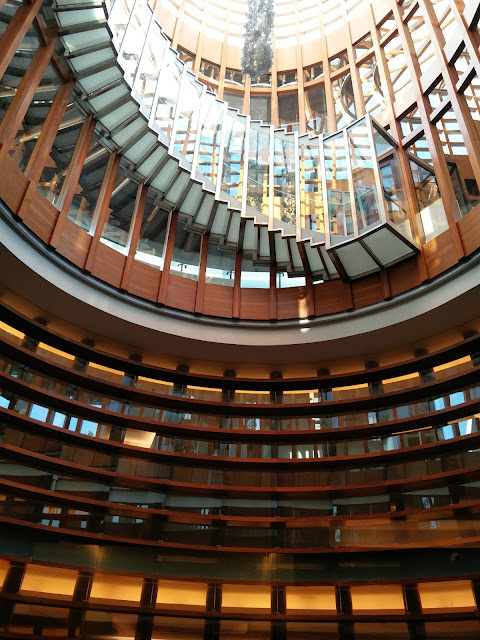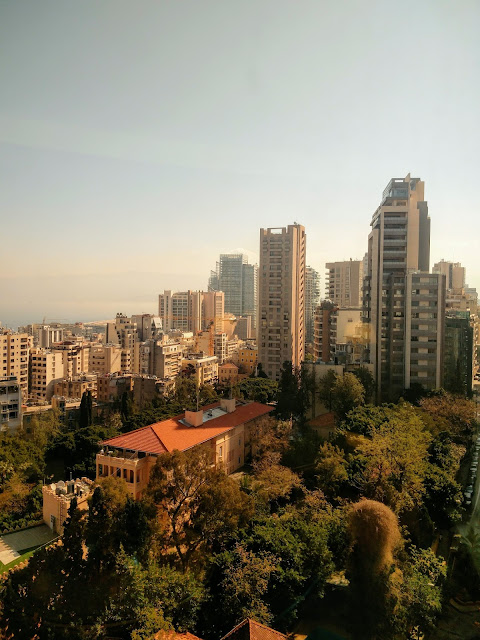Where to Stay/cation In Lebanon: A Guide For the Local, Expat and Tourist
Perhaps
now more than ever, the notion of a staycation has become relevant and
essential. With Lebanon mired in deep economic and financial strife,
exacerbated only by the real threat of the coronavirus pandemic plaguing the world,
travel and tourism must be completely reimagined.
Since
my move to Lebanon in 2011, I spent every single summer within its borders. Sure,
our perch on the Mediterranean is a stone’s throw from Cyprus and no more than
four hours by plane to the European mainland. But who in their right mind would
ditch the abundant sunshine, soothing blue sea, majestic mountains, and
beautifully balanced cuisine that Lebanon boasts? I certainly never felt that
inclination.
But
it’s not quite a vacation unless you leave your house to seek shelter elsewhere
and transform scenery. And that’s what we would do on occasion, checking in to
hotels big and small, in the capital or far from it, by the sea or tucked away
in the mountains. Each lodging with its own charm, character, and spirit would
in turn revive ours, lending a cathartic break from the day-to-day hustle.
I’ve
done quite a bit of traveling, and there is no doubt that our country’s
hospitality standards set the bar high. And if there were ever a time to
support our local establishments, it is now. Therefore, I’ve compiled a list of
my favorite properties in Lebanon and invite you to bookmark this guide.
Whether you’re looking for a secluded stay with sweeping views of Mount
Lebanon, or you’d prefer to cozy up by the sea and roam civilization’s oldest
city; whether you’re after a five-star luxury affair with unmatched dining, or you
fancy a modest, no-frills sojourn housed near ancient Roman relics, you’ll
find it all here – in this blog post, of course, but namely within our magnificent
Lebanese frontiers.
Self-described
as a “modern classic for Beirut,” Gordon Campbell’s Le Gray
Hotel takes its throne in the historic downtown district. Many pass by
its edifice, failing to realize what lies within. Straddling the now-shuttered Virgin
Megastore on one side and Annahar on the other, the five-star property opened
its doors in 2010 and is a member of The Leading Hotels of the World.
On
several occasions, I’ve brushed past the likes of English pop artist John
Newman and Swedish singer-songwriter John Martin staying at Le Gray. These
prominent artists embody what Le Gray might be in the personified state: artistic,
hip, and ultra-modern. And just as they are up-and-coming artists with a
brilliant future before them, Le Gray too carries oodles of potential at
becoming Beirut’s bastion of smart hospitality.
Hardly stuffy and far from being pretentious, this is your destination for topnotch dining and opulent overnight stays in a central albeit cozy setting.
Hardly stuffy and far from being pretentious, this is your destination for topnotch dining and opulent overnight stays in a central albeit cozy setting.
The
Radisson Blu Martinez in Ain Mreisseh, tucked along a quiet street behind
Phoenicia, is no humble hotel. Boasting 185 rooms and suites with free
turbo-speed Wi-Fi throughout the property, the upscale international chain has
an enviable indoor pool, an extensive breakfast buffet, and genuinely dedicated
staff who don’t stare down at you.
Lounging
in the hotel lobby, you’ll feel as though you’ve been transplanted abroad. Rigorous
standards in hospitality and hygiene ensure that you “feel the difference,” as
their tagline attests. Look forward to in-suite comfort, warm hospitality, and
delicious international fare.
14
hours is easily the briefest hotel stay I’ve ever been party to. You can
probably reduce that duration to six waking hours, as the balance were spent in
slumber sprawled across a spacious king bed.
As
city dwellers, we rarely think of escaping to the city. I often joked that
downtown Beirut was my second home, since I spent nearly as much (and
occasionally more) time there as I did at our residence in the
Beirut ‘burbs.
But
when an opportunity arose to stay over at the Gefinor Rotana, a towering five-star hotel in the heart of
Clemenceau and Hamra, I couldn’t resist, even if it were midweek and work
obligations loomed over us the next day.
Driving
down Monot, it's hard to imagine that a decade ago, this very
street was the nightlife bastion of Beirut. Littered with bars, restaurants,
and night clubs, the unidirectional cobblestone lane would teem with revelers
shuffling from one outlet to the next, in search of nightlife nirvana.
Today,
however, Monot is a rather quiet quartier, host to a wine cellar, a gluten-free
bakery, an organic eatery, and at its very edge, Beirut’s premier boutique
hotel. Towering formidably over Saifi Village with a panoramic vista of
Beirut’s downtown and port, O Monot is hardly six years old but has already
snatched distinction as a member of the Small Luxury Hotels of the World.
Walking
past the glass sliding doors into a smart, divan-decked lobby, the
immediate impression that took shape in my head was how scrupulously relaxed the
hotel is, totally detached from its environs. The length-wise lobby terminates
in a den doubling as a bar, where wood-and-brass staggered bookshelves house a
volume of antiquated Encyclopedia Britannica and artsy knickknacks from every
corner of the globe.
Read more here.
 |
| The O Monot rooftop, which towers high in the sky, neck to neck with Achrafieh's apartment buildings |
Beit
Mery has always held a certain spell over me. Straddling residential Ain Saadeh
and summertime hotspot Broumana, this charming village has arguably the most
breathtaking vantage points of Beirut, the Mediterranean, and everything in
between.
Most
recognize it as the setting of Al Bustan, a hotel lush with sprawling gardens
constructed over half a century ago by entrepreneur and statesman Emile
Bustani. Others have come to identify the town with its ancient Roman and
Byzantine ruins nestled below Deir Al Kalaa, or Couvent Saint
Jean, an Antonine Maronite monastery that doubles as a majestic wedding venue.
But
there’s far more to Beit Mery than meets the eye: The parallel streets that
narrow to the width of a car despite remaining two-way. The yellow-stone
buildings that have withstood the inclement harshness of many a winter. The
crisp, cool air in the early morning and late evening on a warm summer’s day.
And, as I recently came to unearth, an endearing establishment named Hotel Wakim perched centrally on the
Beit Mery roundabout yet so easily overlooked by passersby.
Located
squarely at the port of Byblos, the five-star boutique property perches right on the
Mediterranean and boasts an expansive seaside cove. Therein sit Sophia Bay, a
zen for sunbathers and seafarers, and Al Marsa café. “Charming”
is the best adjective to describe the hotel, from the cream-colored,
chandelier-decked lobby with local artwork on display, to the den-like
breakfast buffet site turned evening pizzeria, Café Tournesol.
Present moments
with past precious pieces adorn the walls to form a heritage
collection. Inside suites, discover hand-woven decorative lace mounted on
walls, and stones from the sea serving as closet door handles. Throughout the
property, cherish silk-woven carpets, antique furniture, vintage books and a
restored Mediterranean Byzantine mosaic picturing birds native to Byblos.
Spend a day at Byblos Sur Mer, guest to its rustic hospitality, and you’ll lose all notion of time.
Spend a day at Byblos Sur Mer, guest to its rustic hospitality, and you’ll lose all notion of time.
Though
it figures as the second largest city in the country and famously houses Kasr
el Helo of A.R. Hallab, these days Tripoli rarely comes to mind as a
leisure destination. Life is calm in these parts, veering on the mystical.
It’s like taking a trip back in time to the previous century, with vendors and
souk merchants along every street corner, rock-bottom prices, and a lulling pace. Here the air is far cleaner than in the
capital, and folks still make their livelihoods from catching fish, crafting
olive-oil soap, churning salep ice cream, or baking wheat bran pita pockets.
It’s as if history was carefully preserved and continues to play out dutifully.
Via
Mina is one telling example.
You
could easily stroll by without it drawing your notice. A three-level edifice
with whitewashed walls, tiffany blue shutters, and a tranquil garden out front
adorned with wooden tables and chairs combine to form your first impression.
The front door, half ajar, creates a homey feel of welcome.









Comments
Post a Comment